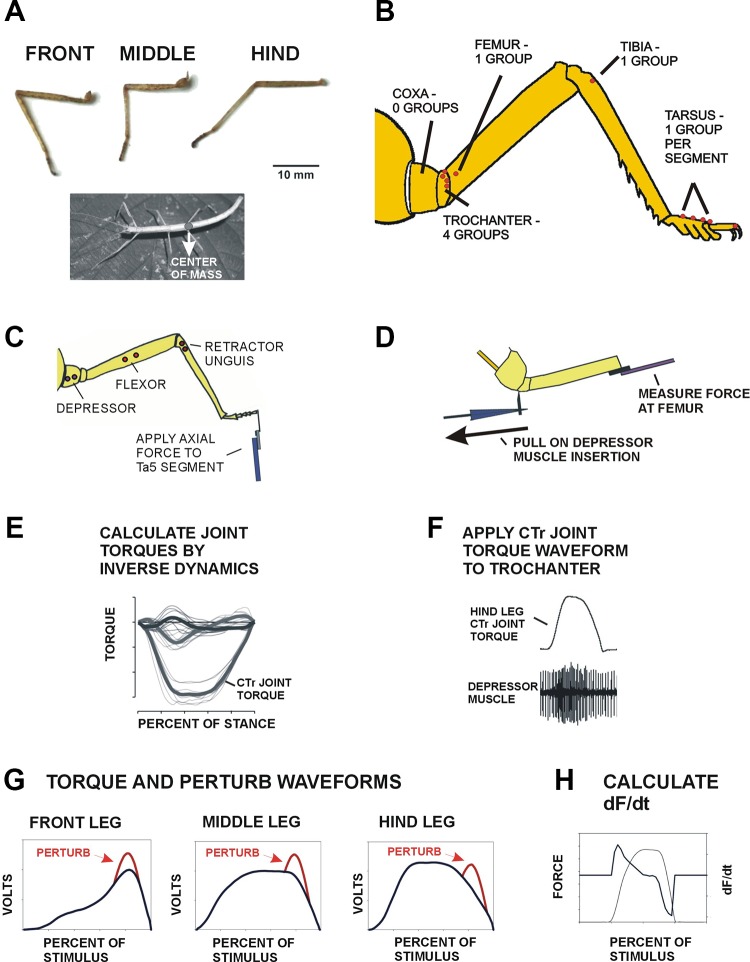Fig. 1.
Preparations and generation of torque waveforms. A: serially homologous legs of stick insects. Front, middle, and hindlegs of stick insects have similar segments and overall size. Forces exerted by the legs differ as the center of mass is located over the hindleg coxa. B: diagram of locations of campaniform sensilla. Similar groups of campaniform sensilla are present on the trochanter and tarsus in all legs. [Adapted from Arthropod Structure & Development (Zill et al. 2015), with permission from Elsevier.] C: preparation for stimulation of tarsal sensilla. Axial forces were applied to the end of the 5th tarsal segment (Ta5) to stimulate tarsal campaniform sensilla. Motor activities were recorded in leg muscles that act as synergists in substrate grip (trochanteral depressor, tibial flexor, and retractor unguis). [Adapted from Arthropod Structure & Development (Zill et al. 2015), with permission from Elsevier.] D: stimulation of trochanteral force receptors. Forces were applied at the insertion of the depressor muscle and measured in the distal femur. Searching was induced in other legs by removal of support/contact. [Adapted from Zill et al. (2012).] E: use of joint torques as mechanical stimuli. In a previous study (Dallmann et al. 2016), ground reaction forces and leg kinematics were measured in freely moving animals. Joint torques were calculated by inverse dynamics. F: in the present study, the coxotrochanteral (CTr) torque waveforms were applied as stimuli to the trochanter while recordings were taken from leg muscles. G: torque waveforms and perturbations. Mean values of joint torques were applied to the trochanteral depressor insertion or distal femur (shown in black). In some tests, transient force perturbations (shown in red) were added to the waveforms as brief half-sine increases (160-ms duration at phase 0.72). H: rate of change of force (dF/dt) was calculated from the waveform or the applied force.

